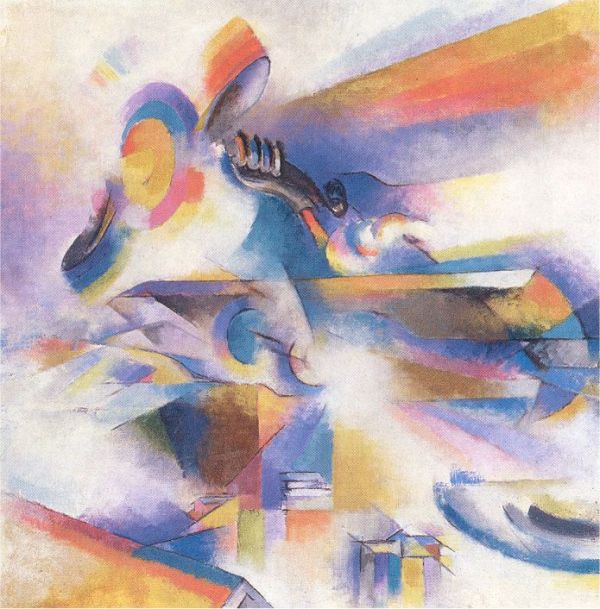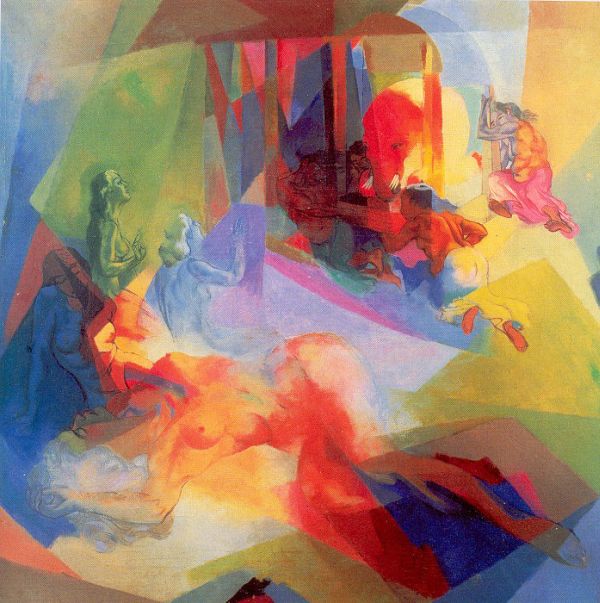Stanton MacDonald-Wright (1890-1973)
Get a MacDonald-Wright Certificate of Authenticity for your painting (COA) for your MacDonald-Wright drawing.
For all your MacDonald-Wright artworks you need a Certificate of Authenticity (COA) in order to sell, to insure or to donate for a tax deduction.
Getting a MacDonald-Wright Certificate of Authenticity (COA) is easy. Just send us photos and dimensions and tell us what you know about the origin or history of your MacDonald-Wright painting or drawing.
If you want to sell your MacDonald-Wright painting or drawing use our selling services. We offer MacDonald-Wright selling help, selling advice, private treaty sales and full brokerage.
We have been authenticating MacDonald-Wright and issuing certificates of authenticity since 2002. We are recognized MacDonald-Wright experts and MacDonald-Wright certified appraisers. We issue COAs and appraisals for all MacDonald-Wright artworks.
Our MacDonald-Wright paintings and drawings authentications are accepted and respected worldwide.
Each COA is backed by in-depth research and analysis authentication reports.
The MacDonald-Wright certificates of authenticity we issue are based on solid, reliable and fully referenced art investigations, authentication research, analytical work and forensic studies.
We are available to examine your MacDonald-Wright painting or drawing anywhere in the world.
You will generally receive your certificates of authenticity and authentication report within two weeks. Some complicated cases with difficult to research MacDonald-Wright paintings or drawings take longer.
Our clients include MacDonald-Wright collectors, investors, tax authorities, insurance adjusters, appraisers, valuers, auctioneers, Federal agencies and many law firms.
We perform Stanton MacDonald-Wright art authentication, appraisal, certificates of authenticity (COA), analysis, research, scientific tests, full art authentications. We will help you sell your Stanton MacDonald-Wright or we will sell it for you.


Stanton MacDonald-Wright was an American painter, best known for collaboratively founding the Synchromist movement along with Morgan Russell. Synchromism is an abstract movement that emphasizes the use of “chords of color” to evoke the sensation of music. Synchromism was the first abstract movement initiated by American artists.

MacDonald-Wright was born in Charlottesville, Virginia but spent much of his childhood in California, after his family relocated to Santa Monica in 1900. MacDonald-Wright realized his interest in art at an early age and enrolled at the Los Angeles Art Students League.




After only two years of study in California, MacDonald-Wright decided to receive further training in Europe, and enrolled at the Sorbonne, the Académie Julian, the Ecole des Beaux-Arts and the Académie Colarossi in France. MacDonald-Wright studied optical sciences and color theory under leading instructors, including Michel-Eugène Chevreul, Hermann von Helmholtz, and Ogdon Rood. MacDonald-Wright drew from not only his instructors, but also the current art trends in Paris, primarily the Cubist movement. While abroad, MacDonald-Wright met fellow American painter, Morgan Russell, who would soon become his partner in developing the Synchromist movement.

In 1913, MacDonald-Wright and Russell organized their first Synchromist exhibition in Munich, Germany. The artists used bold and vibrant colors, unlike the usual cubist painters of the time. In the next several years, their work continued to become less representational and more abstracted.


As World War I began to set in motion, MacDonald-Wright returned to the United States, exhibiting in New York before returning to Los Angeles. MacDonald-Wright ‘s modernist work made a major impact on the California art scene, and local art institutions revered him. In 1935, MacDonald-Wright became the director of the Southern California division of federal Works Projects Administration (WPA) that was enforced during the Great Depression era. MacDonald-Wright had the opportunity to work on several social projects, including murals in Santa Monica City Hall.
As MacDonald-Wright worked less on fine art and more on civic projects, his style became more traditional and reminiscent of the American Regionalist movement. MacDonald-Wright also made efforts in filmmaking, writing and taught an art history course at the University of California in Los Angeles. After World War II, MacDonald Wright continued to travel, maintaining studios in Japan and Italy.
The work of MacDonald-Wright in now in major museum collections around the world. MacDonald-Wright’s contributions to Synchromism made a major impact on modernism in Europe and in the United States. Do you think you own a painting by MacDonald-Wright? Contact us. We are the experts on Synchromist works by Stanton MacDonald-Wright.
Reviews
1,217 global ratings
5 Star
4 Star
3 Star
2 Star
1 Star
Your evaluation is very important to us. Thank you.
